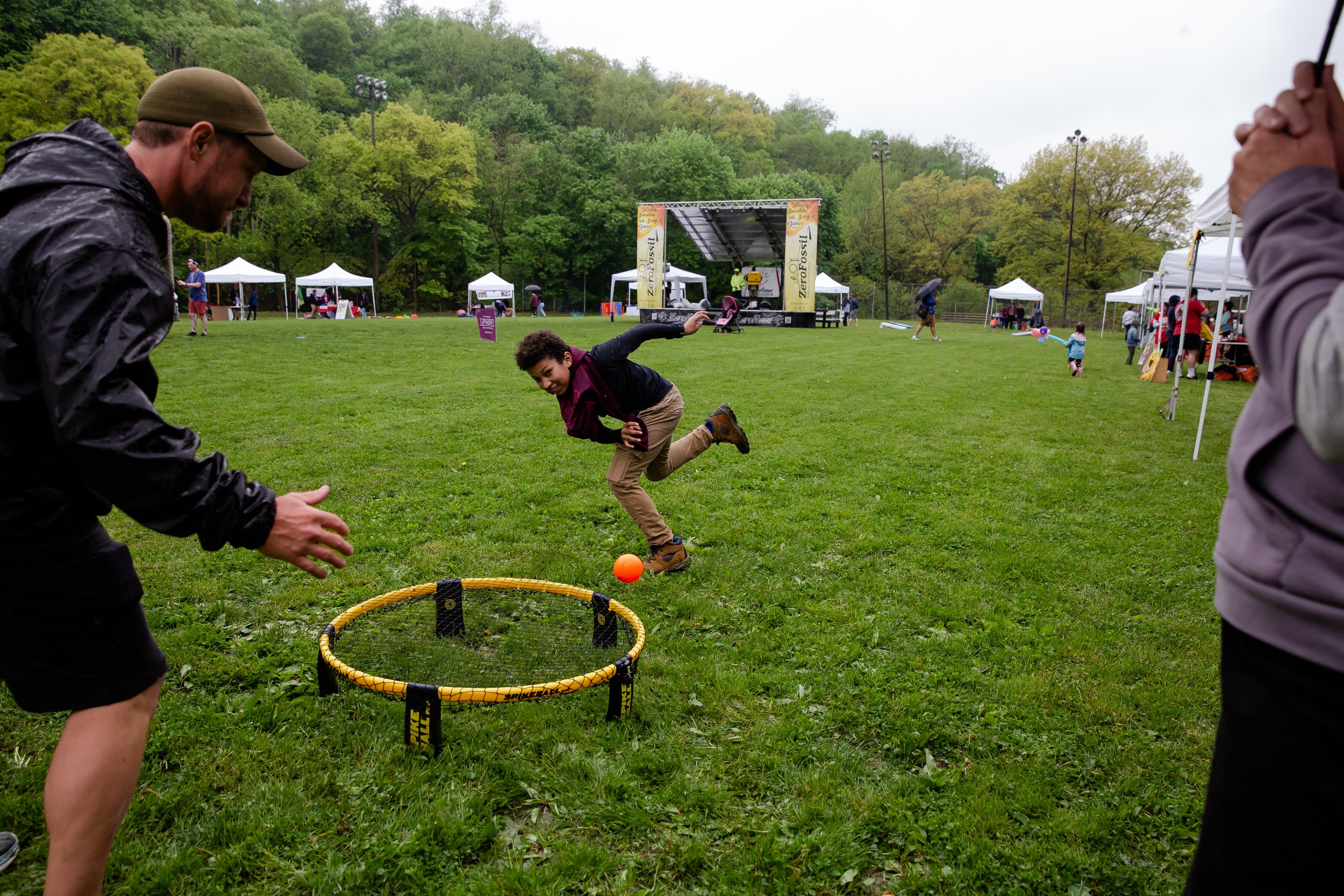Big Body and Physical Play: Benefits and Activities for all Ages
Big Body and Physical Play for Children
There are two avenues to physical activity for children: (1) the structured, directed kind that children get in a school physical education program and (2) the unstructured free play of big body play — the rough and — tumble activities and the exuberant and spontaneous gross motor movements that come naturally and instinctively to children.
Frances Carlson, the author of Big Body Play, identifies it as the “very physical, vigorous, boisterous, and sometimes bone-jarring play style that many children love and crave.”
The National Association for the Education of Young Children (NAEYC) endorses big body play in Early Childhood Education, as it is a large support for children’s developing skills, especially social-emotional and linguistic thinking. Through practice with active play, children gain an understanding of themselves in space, learn how to manage and control their own bodies based on how their body can impact that of another, explore verbal and nonverbal communication, and practice turn taking.
Here are some of the key benefits of big body play for children:
Physical Health: Big body play promotes physical fitness by improving cardiovascular health, muscle strength, coordination, and flexibility.
Social Development: Big body play often involves interaction with others, which helps children develop social skills including cooperation, negotiation, and communication while engaging in group activities.
Emotional Regulation: Physical activities allow children to regulate emotions, reduce anxiety, and promote overall emotional well-being.
Cognitive Development: Physical play stimulates the brain and enhances problem-solving skills. Children learn about cause and effect, spatial relationships, and physics through activities like building, stacking, and climbing.
Creativity: Big body play encourages the opportunity to create games and scenarios during play, which enhances children’s creativity and imagination.
Self-Confidence: Overcoming obstacles, climbing to new heights, or learning a new physical skill can provide a sense of accomplishment and self-assurance.
Risk Management: Big body play allows children to assess risks and make decisions.
Sensory Integration: Engaging in various physical activities helps in sensory integration, where the brain processes sensory information from different modalities (such as touch, balance, and body awareness).
Family Bonding: Whether it's a hike, a day at the playground, or playing sports together, big body play activities create lasting memories and strengthen family relationships.
Healthy Lifestyle Habits: Children who enjoy physical activities are more likely to continue being active throughout their lives.
While big body play does offer numerous benefits, safety should remain a priority for anyone participating in big body play with children. Ensuring that proper supervision occurs is essential for children to engage in physical activities safely. Having a suitable environment for physical play is also important for safety and accessibility.
Big Body and Physical Play for Teens
Big body play for teenagers involves physical activities that allow them to use their bodies in dynamic and energetic ways. These activities are not only fun but also promote physical fitness, social interaction, and emotional well-being.
Activity examples of big body play for teenagers include:
Team Sports: Teenagers often participate in team sports such as basketball, soccer, football, volleyball, or rugby. These sports involve running, jumping, and various body movements, promoting cardiovascular health, coordination, and teamwork.
Individual Sports: Activities like swimming, tennis, gymnastics, or martial arts offer teenagers opportunities for big body play while allowing them to focus on individual skills and goals.
Dance: Many teenagers enjoy dance as a way to have fun, express themselves, and stay physically active.
Skateboarding and Rollerblading: Skateboarding and rollerblading involve balance, coordination, and tricks, allowing teenagers to engage in adventurous and physically demanding activities.
Rock Climbing: Indoor or outdoor rock climbing challenges teenagers both mentally and physically. It requires strength, endurance, and problem-solving skills.
Parkour: Parkour is a discipline that involves moving rapidly through an urban environment, negotiating obstacles using running, jumping, and climbing.
Biking: Mountain biking or BMX biking allows teenagers to explore outdoor trails, perform tricks, and enjoy the thrill of speed and movement.
Other Outdoor Activities: Activities such as hiking, kayaking, rafting, or zip-lining offer teenagers opportunities to engage with nature while participating in physically challenging and exciting experiences.
Fitness Classes: Teenagers can attend fitness classes tailored to their age group, such as high-intensity interval training (HIIT), circuit training, or dance fitness classes.
Recreational Games: Teenagers often engage in informal recreational games with friends, such as tag, capture the flag, or ultimate frisbee. These games involve running, dodging, and quick movements, providing an outlet for big body play in a social context.
Big body play for teenagers is not only essential for their physical development but also for building confidence, social skills, and a positive attitude toward physical activity that can last into adulthood.
Big Body and Physical Play for Adults
While the term "big body play" is often associated with children, the concept of engaging in physical activities involving large movements of the body also applies to adults. For adults, these activities may take different forms and offer similar benefits in terms of physical health, emotional well-being, and social interactions.
Here's how big body play can manifest in the lives of adults:
Sports and Athletics: Many adults engage in sports such as basketball, soccer, tennis, or swimming, or various sports leagues, which involve significant physical movements and coordination.
Dance: Dance not only provides exercise but also allows for creative expression and social interaction.
Outdoor Activities: Activities like hiking, rock climbing, kayaking, or skiing involve substantial physical effort and body movement. These activities often take place outdoors, providing a connection with nature along with the benefits of physical activity.
Fitness Classes: Exercise classes often involve dynamic and large body movements. These classes are not only great for physical fitness but also for socializing and meeting like-minded individuals.
Yoga and Pilates: While these practices focus on flexibility and balance, they also involve various large body movements and poses. Yoga, in particular, includes sequences that require significant physical effort and coordination.
Gardening: Gardening involves a lot of physical activity. Digging, planting, weeding, and other gardening tasks require bending, squatting, and lifting, providing a low-impact form of big body play.
Team Building Activities: In corporate or group settings, team building activities often involve physical challenges and problem-solving tasks that require significant body movements, and promote teamwork and camaraderie.
Martial Arts: Martial arts involve rigorous physical training, including various kicks, punches, and stances. Practicing martial arts not only improves physical fitness but also enhances mental discipline and focus.
Playful Interactions: Playful interactions with children or pets can involve activities such as running, chasing, or playful wrestling, which are forms of physical play for adults that promote bonding and laughter.
Fitness Challenges: Participating in fitness challenges, obstacle course races, or mud runs requires a combination of strength, endurance, and agility, encouraging adults to engage in rigorous physical activities.
Engaging in these activities not only promotes physical health and well-being but also fosters a sense of community, reduces stress, and enhances overall quality of life for adults.
Resources on Big Body and Physical Play
Here are some resources and references surrounding big body play and its benefits:
Benefits of Play, and Big Body Play, In Particular, The National Association for the Education of Young Children (NAEYC)
Balancing Safety and Healthy Risk-Taking for Young Children, Psychology Today
Big Body Play: Benefits, Risks, and Myths, Greentrike
Physical Activity for Kids and Teens, Nebraska Extension - University of Nebraska
How Much Physical Activity do Adults Need?, Centers for Disease Control and Prevention (CDC)
Physical Activity for Adults, Nebraska Extension - University of Nebraska
Rough-and-Tumble Play: A Teacher’s Guide 2023, brightwheel Blog



